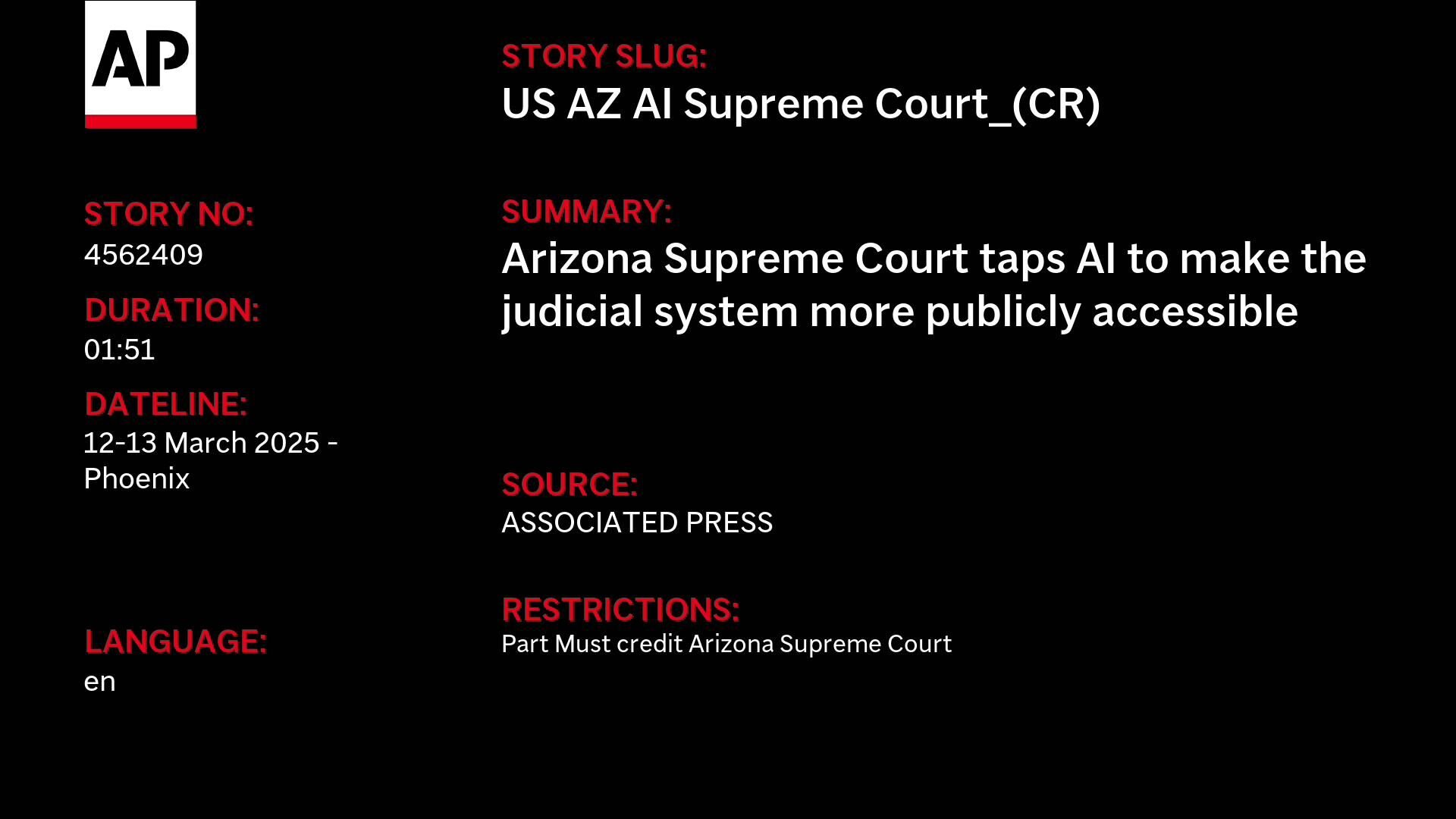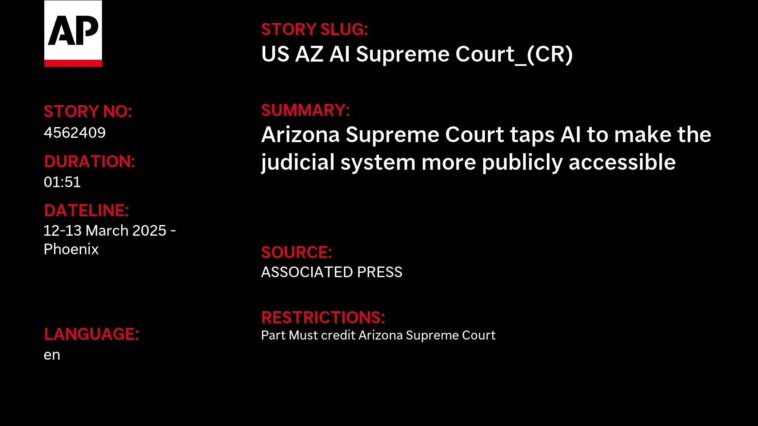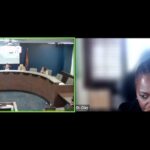
Examining the Right to Remain Silent in Arizona Courtrooms
The recent ruling by the Arizona Supreme Court has reignited the public debate on the right to remain silent and whether invoking that right can be used against a defendant during trial. In this opinion editorial, we take a closer look at the ruling, examine its practical implications, and discuss the tangled issues surrounding selective silence in legal proceedings. Our aim is to shed light on the subject in neutral, straightforward language, while highlighting the small distinctions and subtle details that make this legal battle even more compelling.
The case, which involved a suspect named Giovani Melendez, forces us to examine the notion that strategic decisions made during police questioning may have long-lasting consequences in court. At its core, the controversy revolves around whether choosing to answer some questions while staying silent on others can become a tool for prosecutors. As we explore this debate, we will dive into the different aspects of the ruling, its alignment with Miranda warnings, and the potential impact on future trial tactics.
The Legal Landscape: Understanding the Right to Silence
Traditionally, the right to silence is a cornerstone of the U.S. legal system, rooted in the constitutional protections afforded by the Fifth Amendment. In theory, this right ensures that suspects are not compelled to self-incriminate, and any decision to remain silent should be respected by law enforcement and the judiciary. The 1966 Miranda ruling famously elaborated on these safeguards, informing suspects of their right to remain silent and to have an attorney present during interrogations.
However, the case involving Melendez complicates matters. While it is undeniable that the right to silence is protected under federal law, the Arizona Supreme Court has taken a closer look at the fine points of how silence is interpreted when it comes to mixed or selective responses. Essentially, their ruling suggests that if a suspect does not unequivocally refuse to answer all questions, but instead offers a mix of responses and silence, that selective approach may be used by prosecutors to challenge the credibility of the testimony.
Selective Silence and Its Tactical Use in Court
One of the most heated discussions arising from the ruling is the idea of selective silence. In Melendez’s case, when questioned by police, he not only refused to answer some questions but also provided answers to others. The Arizona Supreme Court described this method as “tactical deferrals”—a maneuver that allowed prosecutors to question his decision to remain silent on key issues.
This tactic raises several important points:
- Strategic Decision-Making: Defendants might decide to hold back some responses while answering other questions, potentially believing that this selective approach will protect their rights without jeopardizing their overall defense.
- The Jury’s Interpretation: The court ruled that prosecutors are allowed to point out these selective silences in front of the jury, leaving it to the jurors to decide the credibility of the defendant’s account. This, in turn, suggests that not every instance of silence is shielded by legal protections.
- The Blurring of Miranda Lines: The ruling inherently challenges the conventional understanding of Miranda warnings by suggesting that silence, unless clearly and unequivocally invoked, may not receive the absolute protection many expect.
Critically, Justice John Lopez’s opinion emphasized that once the defendant began answering some questions during a police interview, his choice was no longer regarded as an unequivocal invocation of his right to silence. This means that in situations marked by selective responses, the line between protected silence and tactical deferral becomes blurred, leaving the courtroom environment full of problems where jurors must weigh small distinctions and subtle details in an already tense scenario.
Decoding Miranda Warnings and Their Twists and Turns
Miranda warnings have long stood as a safeguard for suspects in custody. They are intended to ensure that individuals understand that both the things they say and the things they choose to remain silent about are protected under the law. However, the Arizona ruling reveals that there are complicated pieces and messy twists when it comes to how these warnings are interpreted in practice.
One of the critical arguments by the dissent in the previous appellate ruling was that the warnings did not explicitly state that any form of silence could be used against the defendant. Appellate Judge Michael Brown noted that, according to the original Miranda messages, there is no language suggesting that silence—whether total or partial—would come back to haunt the defendant in court.
Yet, in the case of Melendez, his selective silence opened up the possibility that some of his decisions can be scrutinized during cross-examination. This situation encourages us to take a closer look at the following aspects of the Miranda warnings in the modern courtroom:
- Clear Communication: The public needs to be aware of the potential consequences when they choose to remain silent selectively. Just as many have found legal advice that is harder to follow, the warnings may be missing some of the small distinctions necessary for clear understanding.
- Legal Reform: If the state wishes to use selective silence as a prosecutorial tool, it might necessitate changes to the Miranda warnings to explicitly state the possibility that silence could carry a double-edged effect. However, such changes might introduce new, nerve-racking challenges as the warning language gets more complex.
- Constitutional Concerns: Critics have argued that using partial silence against a defendant undermines the fundamental principles of Fifth Amendment protection. The ruling ultimately forces us to ponder: do the current warnings fully protect the rights they are supposed to, or do they leave room for interpretations that might upset the balance of justice?
In a nutshell, while Miranda warnings have long been a protective shield, the evolving nature of interrogations and courtroom strategies, especially those involving tactical deferrals, means that both defendants and legal professionals need to be aware of the small twists in this traditional doctrine.
Impact on Jury Decision-Making and Trial Strategy
One of the most critical outcomes of the Arizona ruling is its impact on how jurors might perceive a defendant’s silence. If silence is used strategically or selectively, jury members must make a decision on whether to interpret that silence as a sign of guilt or as a cautious exercise of constitutional rights.
This intricate interplay presents several challenges:
- The Dual-Edged Sword of Silence: Jurors are often tasked with sorting through a mixture of spoken words and unspoken reticence. The challenge is in distinguishing whether the unsaid is due to genuine uncertainty, legal strategy, or even a nerve-racking fear of self-incrimination.
- Credibility and Tactics: The ruling essentially gives prosecutors the right to suggest that tactical deferrals during police questioning could undermine a defendant’s overall credibility. It creates a scenario where the jury must not only listen to the defendant’s spoken words but also figure a path around the implications of their silence.
- Guidance from the Bench: One potential remedy to this challenge is for judges to provide clearer instructions to juries about how to interpret selective silence. However, such guidance is tricky to craft, as it must respect constitutional protections while avoiding prejudice against the defendant.
The following table outlines some potential pro and con perspectives on how silence might be interpreted in court:
| Aspect | Argument for Silence as Neutral | Argument for Silence as Evidence |
|---|---|---|
| Legal Protection | Miranda warnings fully protect a suspect’s decision to remain silent. | Selective silence suggests inconsistency, challenging the defense’s narrative. |
| Jury Perception | Jurors should not infer guilt based solely on silence. | A jury may interpret selective responses as an admission of guilt. |
| Interrogation Tactics | If questioned properly, silence remains a neutral indicator. | Prosecutors can highlight selective silence to weaken credibility. |
These perspectives reveal that the issues at hand are not simply black and white, but rather full of tricky parts and tangled issues that force jurors to weigh both the spoken and the unspoken aspects of a defendant’s testimony.
Legal Precedents and Their Influence on Future Cases
Historically, many rulings—both at the state and federal level—have aimed to protect the constitutional rights of suspects. The Miranda ruling was one of the first attempts to codify these protections into a form that law enforcement must follow. Nevertheless, the evolution of interrogation tactics means that prior legal precedents do not automatically settle the debates we see today.
This ruling in Arizona is significant for several reasons:
- Setting a New Precedent: Arizona’s decision makes it clear that unless a defendant clearly states that they are choosing to remain silent across the board, selective silence may be open for examination in court. This could steer how future cases are argued and how legal teams prepare their interrogation strategies.
- Revisiting Miranda in the Modern Context: With evolving technology and new forms of evidence, many in the legal community are beginning to wonder whether Miranda warnings should be updated to include explicit discussions of selective silence. The current ruling adds fuel to this debate.
- Balancing Act in the Courtroom: The decision also forces a balancing act where the protection of constitutional rights must be weighed against the state’s interest in ensuring the truth is fully explored during a trial. This balancing act is a reminder that both sides of the courtroom have super important objectives that sometimes clash.
Legal experts remain divided on whether this new interpretation of the right to silence is a step in the right direction or whether it undermines the protections envisioned by the Miranda ruling. While some argue that the state’s use of selective silence in polynomial cross-examination introduces a fair method for testing the consistency of a testimony, others warn it may lead to chilling effects where someone might hesitate to exercise their constitutional rights for fear of future repercussions.
The Role of Defendant Behavior in Shaping Courtroom Outcomes
Another critical element in this case is how a defendant’s behavior—specifically, the choice to provide mixed responses during police questioning—can dramatically shape courtroom outcomes. In the eyes of the law, a defendant’s actions at the police station, and their subsequent responses or lack thereof, might very well be used as evidence against them if not fully understood in context.
This raises immediate questions about the actor’s intentions and the subsequent legal interpretation:
- Intent versus Outcome: When a suspect like Melendez partially answers certain questions, it can be argued that the intent behind the selective silence was tactical rather than an outright refusal to exercise a legal right. Is it reasonable to equate a tactical delay or deferral with an underpinning of guilt?
- The Danger of Assumptions: Relying solely on selective silence places a heavy burden on the jury to interpret the defendant’s strategy correctly. A misinterpretation could lead to a conviction purely based on timing and the order in which responses were provided, rather than on substantive evidence linking the defendant to the crime.
- Guidance for Future Defendants: In light of this ruling, legal experts now debate whether suspects should receive additional counsel at the time of arrest to clearly understand that partial silence may not be granted as the same shield as complete silence.
For defendants in future cases, these discussions underscore the importance of immediate, clear legal advice when confronted by police interrogations. The tangled issues created by selective silence mean that any misstep can have long-lasting effects in the courtroom.
Implications for Law Enforcement and Prosecutors
This ruling does not solely impact defendants; it also has significant ramifications for law enforcement and prosecutors. Police officers and legal teams operate within a system that is constantly revisiting its practices, especially when new interpretations challenge long-standing protections.
Key points for law enforcement include:
- Interrogation Techniques: Officers must be trained to understand the small shades in a suspect’s responses, recognizing when a suspect is genuinely invoking their rights fully versus when they are offering tactical deferrals. This understanding is crucial in ensuring that all constitutional safeguards are maintained.
- Documentation and Clarity: Detailed documentation of an interrogation session is now more critical than ever. Clear records help courts later determine whether a defendant’s selective silence was a deliberate tactic, or if it stemmed from confusion during the questioning process.
- Legal Strategy Adjustments: Prosecutors will need to adjust their strategies to ensure that any reference to a defendant’s partial silence is made without overstepping the bounds of what the law permits. They must steer through these nerve-racking legal twists carefully to avoid reversing a conviction on appeal.
On the other hand, defense counsel must now work even harder to prepare their clients. They need to ensure that the suspects fully understand that once they start answering some questions, the protective wall of complete silence may crumble, leaving prosecutors room to poke around and question their credibility during trial.
This development could lead to some fundamental changes in how interrogations are handled and how legal advice is given at the critical early stages of criminal investigations.
The Broader Consequences: A Chilling Effect on Constitutional Rights?
A crucial concern arising from the Arizona ruling is whether it might create a chilling effect on the exercise of constitutional rights. The fear is that if defendants learn that selective silence can be held against them, they may become increasingly hesitant to speak up even when it could be in their best interest. This uncertainty can lead to a scenario where even well-intentioned citizens struggle to figure a path through the complexities of law enforcement questioning.
Several arguments underscore this matter:
- Fear of Self-Incrimination: If a suspect is aware that not fully exercising their right to remain silent—even partially—might be used as evidence, they may refrain from providing any useful information at all. This leads to an overwhelming atmosphere of mistrust between law enforcement and the public.
- Potential for Misinterpretation: The possibility that selective silence can be misinterpreted by jurors further complicates the dynamics within the courtroom. Jurors, often left to negotiate the subtle details of a suspect’s statements, might unfairly attribute guilt to those who adopt a more cautious approach during questioning.
- Legal Reforms Needed: There is a growing call from both legal experts and civil rights advocates for the Miranda warnings to be revisited and updated to clearly articulate that any form of silence—selective or total—cannot be used as a basis for inferring guilt. Without such reforms, the conflicting interpretations of silence could continue to burden defendants with unnecessary legal risks.
The jury, the judge, and ultimately the system of justice rely on clear, unambiguous communication. When silence becomes a battleground for competing interpretations, it raises the stakes for every individual navigating the criminal justice system, whether they are suspects, witnesses, or jurors.
Distilling the Case: The Nitty-Gritty of Legal Strategy and Interpretation
In summary, the Arizona ruling on the use of selective silence in court brings to light several key issues that deserve a meticulous examination. When a defendant’s silence is pieced apart and scrutinized, the result can be a courtroom filled with tricky parts and tangled issues that go far beyond simple constitutional rights.
Below is a bulleted summary outlining the primary considerations that this case introduces:
- Selective Silence Versus Complete Silence: Choosing to answer some questions while holding back on others may not afford the same protection as a blanket refusal to speak.
- Jury Implications: Jurors are now given a more complicated task of interpreting the motives behind a defendant’s selective responses, potentially leading to decisions built on subtle twists and slight differences in perceived credibility.
- Law Enforcement Practices: The ruling necessitates better training and more precise documentation during interrogations to safeguard defendants’ rights while allowing for thorough investigations.
- The Need for Reform: There is mounting pressure to update Miranda warnings to ensure that all forms of silence, whether complete or partial, are clearly protected under constitutional rights.
It is essential that any reforms or changes are made with a deep understanding of the small distinctions involved. Only by fully understanding the little details and hidden complexities of policing, legal strategy, and courtroom dynamics can we safeguard both individual rights and the broader interests of justice.
Looking Forward: Recommendations for Policy and Practice
In light of this ruling, several recommendations emerge for legislators, law enforcement agencies, and legal practitioners. Taking into account the nerve-racking and often overwhelming nature of modern criminal proceedings, these recommendations aim to help all parties involved steer through the complexities in a fairer manner.
For Legislators:
- Consider updating Miranda warnings to explicitly state that selective silence is as constitutionally protected as complete silence. This move would provide clearer guidance to suspects about their rights.
- Promote ongoing legislative reviews of police interrogation practices to ensure that constitutional rights are not compromised unintentionally.
- Sponsor public forums and hearings to discuss the practical implications of using selective silence as evidence in court proceedings.
For Law Enforcement Agencies:
- Implement additional training sessions focusing on the subtle parts of interrogations, ensuring that officers fully understand when a suspect is tactically deferring answers rather than invoking complete silence.
- Enhance the clarity and specificity of the documentation process during interrogations to reduce the chance of ambiguous interpretations later on.
- Develop best practice guidelines on how to manage a suspect’s responses in a manner that both respects constitutional rights and maintains the integrity of the investigation.
For Legal Practitioners and Defense Counsel:
- Advise clients explicitly about the potential consequences of providing selective responses during police questioning. Explain that a strategic pause may be interpreted differently than a complete silence.
- Prepare to challenge any attempt by prosecutors to use selective silence as a tool for impeaching a witness’s testimony during cross-examination.
- Advocate for clearer jury instructions that delineate the acceptable boundaries of using certain types of silence as evidence, ensuring that jurors understand the context and motivation behind a defendant’s choice.
These recommendations are designed to foster an environment where constitutional rights are not only respected but are clearly communicated and understood. By taking a closer look at the practical implications of the ruling, policymakers and legal minds alike can work together to ensure that the right to silence remains a robust protection, rather than an ambiguous tool that might be turned against the very individuals it was designed to shield.
Conclusion: Balancing Rights and Responsibilities in a Modern Legal System
The Arizona Supreme Court’s ruling serves as a stark reminder that the right to remain silent, while constitutionally protected, is a nuanced and sometimes misunderstood protection. The selective silence demonstrated in the Melendez case prompts us to get into the nitty-gritty of legal strategy, questioning established norms while ensuring that justice is balanced between state interests and individual rights.
As our legal system moves forward, it is super important for every stakeholder—from police officers to defense attorneys and legislators—to figure a path through these tricky parts with clarity and fairness. The decision forces us to reflect on how the small distinctions in behavior during police questioning can have far-reaching consequences. It also encourages all parties to engage in a broader dialogue about how constitutional rights should evolve in response to modern interrogation tactics and courtroom strategies.
Ultimately, while the ruling may seem off-putting to those who champion unfettered constitutional protections, it also serves as a reminder that legal systems are always evolving. Every twist and turn in a case such as this adds to the body of legal knowledge that, ideally, contributes to a fairer and more transparent courtroom environment. Whether prosecutors or defense attorneys, every legal representative must take the wheel to ensure that the rights of individuals remain uncompromised while the state diligently pursues justice.
Looking ahead, the discussions sparked by this case will likely influence policy debates and legal reforms for years to come. As we digest the implications of using selective silence as evidence, it becomes clear that the balance between safeguarding constitutional rights and enabling effective law enforcement is delicate—and must be handled with both care and precision.
In a courtroom, every word and every silence counts. This ruling challenges the legal community to re-assess how we interpret silence and to potentially reshape the conversation around what it means to exercise one’s right to remain silent. In doing so, it invites us all to work through the tangled issues and slight differences that ultimately shape the outcomes of our justice system, ensuring that every voice—and every silence—is given its due respect under the law.
As we continue to monitor the effects of this ruling, let us not lose sight of the broader conversation about the balance between protecting individual rights and maintaining the integrity of criminal proceedings. The discussion is far from over, and every future case will add a little more to the ongoing narrative on how we define, protect, and understand the legal right to silence in our modern society.
Originally Post From https://tucson.com/news/local/subscriber/article_05f45572-7185-477f-bc21-6cb0badda81c.html
Read more about this topic at
When Silence is a Form of Betrayal
Part 1 — Chapter 3: Silent Betrayal and the Sloth of Silence


